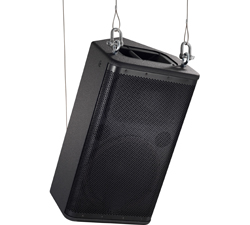
Loop Knots
Loop knots are used to hold objects where security is of paramount importance. The bowline, widely used in rigging, won’t slip, yet is easily tied and untied.
It may be tied in the hand or used as a hitch and tied around an object, usually for lifting purposes (Figure 2 in the PDF below).
Hitches
Hitches are used for temporary fastenings that untie readily. They are generally tied directly around the object instead of first being tied in the hand and then placed over the object.
Hitches must be drawn up tight, as they have a tendency to slip if loose.
The clove hitch (Figure 3 in the PDF below) consists of two underhand loops, which may be tied in the hand and slid over an object at any point along the length of a rope. Knot efficiency is 60%.
Wire Rope
Vast wire ropes are constructed from plow steel, improved plow steel, or extra improved plow steel wire. The wires are woven into strands, which are woven to form the wire rope.
Typical wire rope may consist of six strands wound around a central core. The central core supports the outer strands and helps to prevent the rope from crushing under stress.
Wire rope core materials may be fiber (abbreviated FC), independent wire rope (abbreviated IWRC), or wire strand (abbreviated WSC).
Wire rope is classified by diameter, number of strands, number of wires making up each strand and core material construction.
Rope diameter is measured at its widest dimension. Wire rope is also classified according to the direction the strands and wires are twisted. The distance along the rope required for a strand to make one full revolution is one Lay.
In Right Regular Lay construction, strands twist to the right, wires twist to the left.
Right Lang Lay construction finds both strands and wires twisting to the right.
Left Regular Lay ropes are constructed with strands twisted left and wires twisted right.
The Left Lang Lay configuration twists both strands and wires left.
Regular lay ropes are less susceptible to crushing and deformation because the wires lie nearly parallel to the rope. Lang lay ropes twist the wires across the direction of the rope, and are therefore more flexible and resistant to abrasion damage. If both ends of a lang lay rope are not fixed, however, it will rotate severely when under load.
Most sound and stage rigging requirements are easily handled by two wire ropes: 3/V and l/2” 6 X 19 IWRC classification.
These ropes in improved plow steel have a nominal strength of 13120 pounds and 23000 pounds, respectively. If we assume a design factor of 5, rated capacities become 2600 and 4600 pounds.
Just as knotting a fiber rope reduces the nominal strength of the rope, bending of a wire rope also results in a reduction in its nominal strength.
The tighter the radius of the bend in the rope, the greater percentage of the load is concentrated on fewer wires and strands. This results in a reduction in the rope’s nominal strength and rated capacity.
Experienced riggers always pad beam edges with softeners before wrapping the beam with a sling, and avoid sharp or jagged edges that could possibly injure the wire rope or sling. Heavy burlap or thick polyester is usually used for this purpose.
Excerpted from JBL Professional Technical Note Volume 1, Number 14: “Basic Principles for Suspending Loudspeaker Systems.” Copyright and courtesy of JBL Professional. To continue reading and to see he referenced diagrams, feel free to download the PDF.
